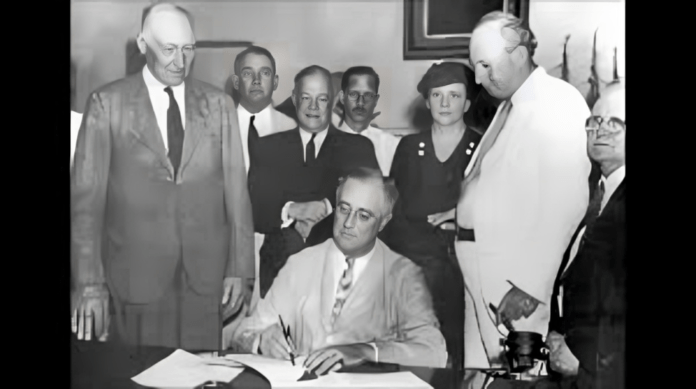After the failure of the Third Round Table Conference, the British government gave the Joint Select Committee the task of formulating the new Act for India. The Committee comprised of 16 members each from the House of Commons and House of Lords, 20 representatives from British India and seven from the princely states. Lord Linlithgow was appointed as the president of the Committee. After a year and a half of deliberations, the Committee finally came out with a draft Bill on February 5, 1935. The Bill was discussed in the House of Commons for 43 days and in the House of Lords for 13 days and finally, after being signed by the King, was enforced as the Government of India Act, 1935, in July 1935.
The main features of the Act of 1935 were:
- A Federation of India was promised for, comprising both provinces and states. The provisions of the Act establishing the federal central government were not to go into operation until a specified number of rulers of states had signed Instruments of Accession. Since, this did not happen, the central government continued to function in accordance with the 1919 Act and only the part of the 1935 Act dealing with the provincial governments went into operation.
- The Governor General remained the head of the central administration and enjoyed wide powers concerning administration, legislation and finance.
- No finance bill could be placed in the Central Legislature without the consent of the Governor General.
- The Federal Legislature was to consist of two houses, the Council of State (Upper House) and the Federal Assembly (Lower House).
- The Council of State was to consist of 260 members, out of whom 156 were to be elected from the British India and 104 to be nominated by the rulers of princely states.
- The Federal Assembly was to consist of 375 members; out of which 250 were to be elected by the Legislative Assemblies of the British Indian provinces while 125 were to be nominated by the rulers of princely states.
- The Central Legislature had the right to pass any bill, but the bill required the approval of the Governor General before it became Law. On the other hand Governor General had the power to frame ordinances.
- The Indian Council was abolished. In its place, few advisers were nominated to help the Secretary of State for India.
- The Secretary of State was not expected to interfere in matters that the Governor dealt with, with the help of Indian Ministers.
- The provinces were given autonomy with respect to subjects delegated to them.
- Diarchy, which had been established in the provinces by the Act of 1919, was to be established at the Center. However it came to an end in the provinces.
- Two new provinces Sindh and Orissa were created.
- Reforms were introduced in N. W. F. P. as were in the other provinces.
- Separate electorates were continued as before.
- One-third Muslim representation in the Central Legislature was guaranteed.
- Autonomous provincial governments in 11 provinces, under ministries responsible to legislatures, would be setup.
- Burma and Aden were separated from India.
- The Federal Court was established in the Center.
- The Reserve Bank of India was established.
Both the Indian National Congress and the Muslim League opposed the Act, but participated in the provincial elections of winter 1936-37, conducted under stipulations of the Act. At the time of independence, the two dominions of India and Pakistan accepted the Act of 1935, with few amendments, as their provisional constitution.
This article was last updated on Sunday, June 01, 2003






